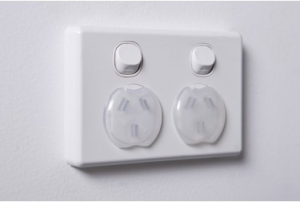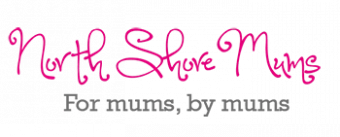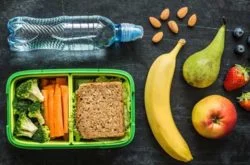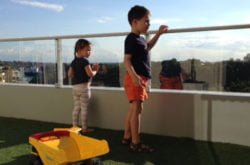Anyone with children knows how tough it is to stop little people from getting into places they shouldn’t! But if your mini-me is set on exploring your home, North Shore Mum Jessica Collins fromBabySafe Products has advice about safety measures you can implement to protect them.
Childproofing can be a daunting process if you don’t know where to start. Whether your little one is just starting to crawl, or is running riot around the house, you will have many things to consider to keep your child safe. Fortunately, there are a variety of solutions to help childproof your house – some easy, some cheap, some elaborate – that can make your home a safer one to explore.
In the first of a three-part series, I’ll start with some general hints and tips, then focus on some ways to make your kitchen and bathroom safer areas for your child.
General tips for Baby-proofing and Child Safety
 Go through your home, room-by-room, at your child’s height – on your hands and knees is usually spot-on. See the sorts of dangers your child could get into, and then look for solutions. At times there will be simple, immediate solutions, like putting breakable items a shelf higher or chemicals out of reach. There are other solutions, like locks and latches, which you can find online or in baby or hardware stores. Sometimes, though, you will have to get creative!
Go through your home, room-by-room, at your child’s height – on your hands and knees is usually spot-on. See the sorts of dangers your child could get into, and then look for solutions. At times there will be simple, immediate solutions, like putting breakable items a shelf higher or chemicals out of reach. There are other solutions, like locks and latches, which you can find online or in baby or hardware stores. Sometimes, though, you will have to get creative!- Remember to check your own and other people’s handbags for loose, sharp and dangerous items if the baby will be crawling nearby or have access to them; especially nail scissors and batteries (hearing aid batteries are particularly small, very dangerous and appealing to babies’ mouths!).
- Don’t leave pets’ water bowls/buckets where babies and toddlers can access them. They have been known to slip and drown in the bowls/buckets, even though the volume of water is typically small.
Room-by-room: The Kitchen
Kitchens can be fraught with danger for children, especially at cooking time when boiling water, knives, and hot oils are in use.
The easiest option is to keep your child out of the kitchen using baby gates. Many kitchens are open-plan and finding a gate to fit can be tricky, but keep searching as there are extendable gates that fit even the widest doorways. Otherwise, a playpen may be alternative way to keep your child out of harm’s way.
- Drawers & cupboards: Drawer locks and cupboard/cabinet latches are the best option to keep your child away from sharp objects – they are cheap and easy to find in hardware, baby and online stores. Most importantly, keep cleaning chemicals far out of reach, and locked up.
- Ovens & appliances: You’ll also find appliance locks for your oven, fridge and microwave.
- Stove tops: Walking toddlers can reach pots and pans hanging over the edge of the stove – always turn the handles away from the edge. You can also attach stove top guards that provide a clear panel of protection between your child and the cooking (that don’t get in the way of your cooking). Also look out for stove knob covers to prevent little ones from turning the stove on.
- Shelves: Breakable items on open shelves (glasses, bowls, etc.) need to either be in a high, out-of-reach place or, if your shelves can take it, add your own doors. If you need a temporary cover to keep objects out of view, a simple curtain can sometimes be enough to do the trick – out of sight, out of mind! Protect the sharp corners of shelves with corner cushions or foam bumpers.
- Power points: Children love to copy and they’ll copy you plugging into outlets. Make sure you prevent electrocution with safety outlet plugs – they’ re cheap, and easy for adults to use and hard for children to remove.
Room-by-room: The Bathroom
The bathroom can be a fun place to play, but there are usually chemicals and other nasties about, and opportunities for nasty falls or burns. Here’s a few tips on how to prevent such accidents:
 Doors: Door knob covers are a handy way to keep bathrooms off-limits when not in use.
Doors: Door knob covers are a handy way to keep bathrooms off-limits when not in use.- Floor: Try to keep tiles dry in case your toddler unexpectedly walks into the bathroom – slipping on the edges of baths etc. can be incredibly dangerous.
- Baths: You can find anti-slip bath mats to prevent in-bath slips, and even ones to tell you when the bath water is too hot. Bath thermometers are also available to ensure you have the temperature just right, and bath spout covers can prevent nasty burns or knocks. Bath toy bags are also a good idea – they keep the bathroom tidy and free from tripping hazards.
- Toilets: As with pets’ bowls, toilets can be a drowning hazard. Use toilet locks to keep these off-limits from climbing toddlers.
- Cupboards, cabinets & laundry appliances: Keep your nasty chemicals and toiletries completely out of reach and locked up with latches and locks, to prevent poisoning. If your baby is just crawling, a simple rubber band around the handles may work, but as they get older you’ll need something more permanent.
- Power points: Ensure you use outlet plugs in your bathroom to prevent any hairdryers or other appliances from being plugged in and dropped into a water source.
And if you are having trouble finding a solution to a childproofing problem, don’t forget to ask your network on North Shore Mums. No doubt someone has been there before and can provide some advice.
For more information on baby-proofing, go to www.babysafe.com.au or this Facebook page
Have you ever come up with a creative solution to protect your baby or toddler in the home?
More on child safety:












